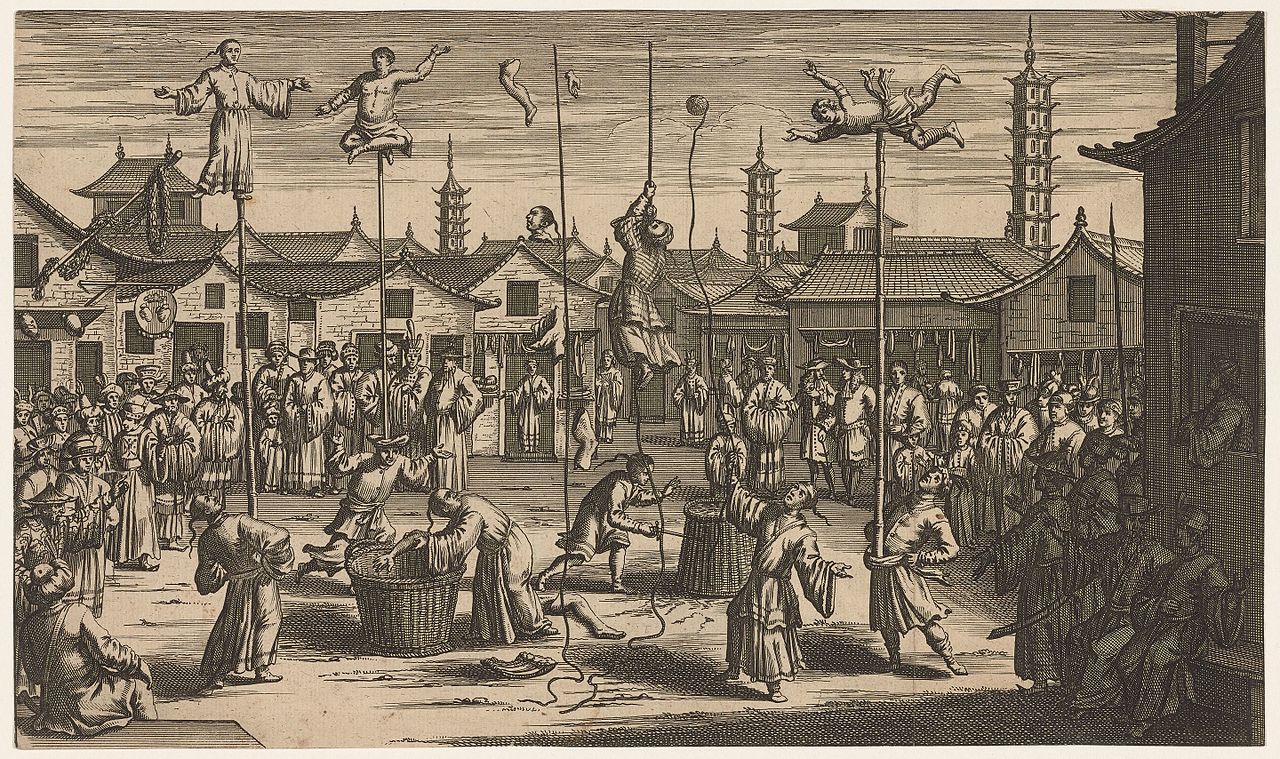Let’s travel back in time to 1920 (or 1820 or even 1020). This has been around forever. Let me take you on a trip to a busy bazaar and together let’s gaze upon one of the greatest magic tricks ever created.
The bazaar is filled with the cacophony of vendors selling their wares. Kids are staring at mouth-watering street food, hoping that the evening would end with the parent buying something that makes this trip worthwhile.
Suddenly, the whole place goes quiet. The Magician is here. He’s got a bright-colored turban around his head, a flat wicker basket held to his hip by one hand, and a been (snake charmer’s flute) in his other hand.
He walks to the center of the bazaar and puts the basket down. The crowd starts forming a big circle around where he has now sat down. He removes the lid from the basket and inside lies an unassuming white rope.
He starts playing the been as the crowd swells up bigger and bigger. Slowly, the rope starts to slither up like a snake. The crowd is ensnared, and the magician now has everyone’s undivided attention.
The crowd watches with bated breath as the rope rises higher and higher until it disappears in the sky. Just as they feel like the show is over, a young boy from somewhere in the crowd starts walking towards the center.
He starts climbing the rope which has just miraculously shot up. Every eye in the crowd is skyward. Hearts filled with incredulity at the sight they’re witnessing. Some even feel concern for the child. He climbs and climbs and climbs until he is out of sight.
The magician stops playing the instrument, and the rope limply falls to the ground – back into the basket from where it started. The child is nowhere to be seen.
The show is over. The magician asks the crowd if they’d contribute some money for the entertainment he provided. Some patrons oblige, but most just walk away without sparing a penny for the trouble the magician and the child went through.
Welcome back to 2020. I may have mentioned this before in passing. You see, I’m a trained magician. I know how this trick works. It’s laughably simple. I won’t spoil the trick here. If you want to know, Google it yourself.
The reason I tell you this story is to make a different, more powerful, point. At the end of the show, very few people pay very little for the entertainment he offers.
How does the magician and (presumably) his child make their living then?
This is where I want to pull the curtain from the act and explain the real story behind the scenes.
What the crowd witnessed was not a magic show. It was a masterclass in creating a distraction. While the crowd had their eyes glued to the sky, the magician’s real team was at work. His team of extraordinary pickpockets.
That was the great Indian rope trick. It wasn’t just a magic trick. It was a pickpocketing scam.
The next time you feel too distracted or too deeply engrossed in “something” that you aren’t paying anything for – stop and think. Think about how the Magician makes a living. Think where his pickpockets are hiding.
That “something” could be social media, or news channels, or empty political rhetoric, or meaningless reality shows. All these “free” distractions work only when there’s some scam behind them. Just because it’s not obvious what that scam is doesn’t make it any less dangerous.
Do not waste your time on them. Focus on your business. Your business needs your undivided attention.
What’s the “rope trick” that’s wasting your time? What’s your plan to stop falling prey to hidden pickpockets working for whoever is running that scam?
Yours,
Abhilash Purohit
UPDATE: Turns out this article was a bit controversial because of something I said in it. I have posted a follow-up to this article to explain what I meant. Please read that too.


